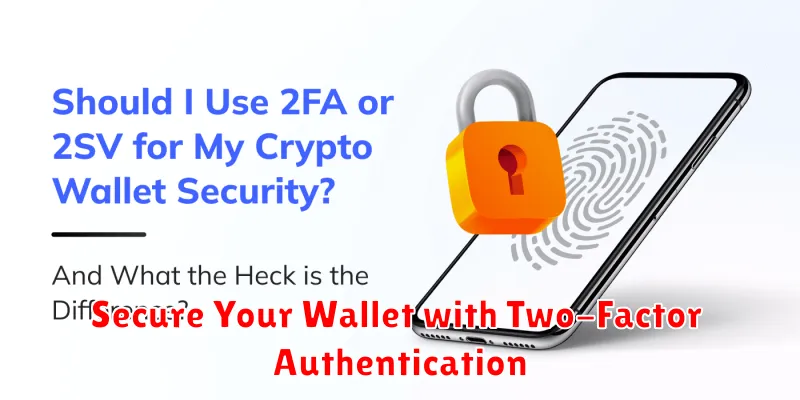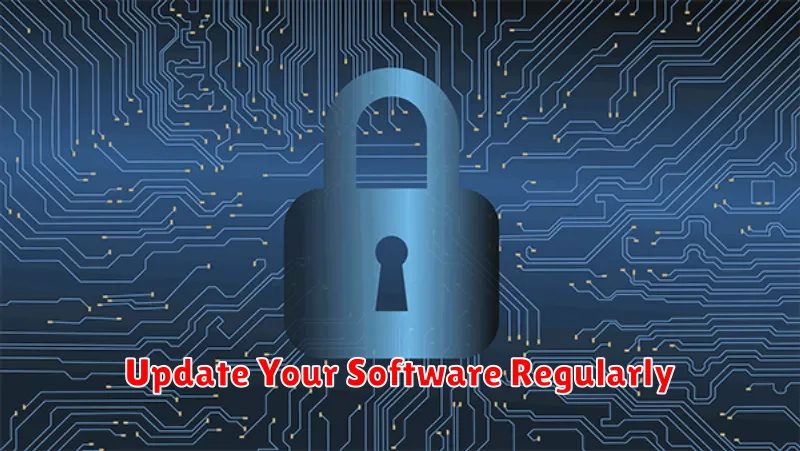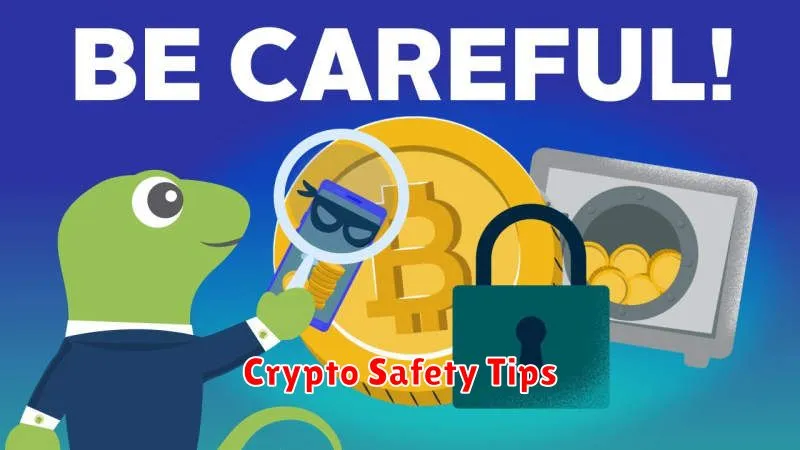Navigating the exciting yet volatile world of cryptocurrency requires a proactive approach to security. This guide, “How to Stay Safe in the Crypto World,” will equip you with the essential knowledge and strategies to protect your digital assets from prevalent threats. Learn how to mitigate risks associated with cryptocurrency scams, exchange hacks, and phishing attacks. Discover best practices for secure wallet management, strong password creation, and two-factor authentication (2FA). Mastering these cryptocurrency security measures will empower you to confidently participate in the evolving landscape of digital finance and safeguard your investments.
Secure Your Wallet with Two-Factor Authentication

In the volatile world of cryptocurrency, securing your wallet is paramount. Two-factor authentication (2FA) significantly enhances your wallet’s security by adding an extra layer of protection beyond just a password.
With 2FA enabled, even if someone obtains your password, they’ll still need a second, time-sensitive code typically generated by an authenticator app on your phone or other device. This effectively prevents unauthorized access, even if your password is compromised.
Enabling 2FA is usually a straightforward process within your wallet’s settings. Look for options labeled “two-factor authentication,” “2FA,” or similar. The specific steps may vary depending on your chosen wallet provider, so consult their documentation for precise instructions.
Consider using a reputable authenticator app like Authy or Google Authenticator, and ensure your phone’s security settings are robust. Regularly backing up your recovery phrases or seeds remains crucial, even with 2FA activated, as this serves as a last resort to regain access to your funds.
Implementing 2FA is a simple yet highly effective way to drastically reduce the risk of theft or unauthorized access to your cryptocurrency holdings. It’s a critical security practice that should be adopted by every cryptocurrency user.
Avoid Clicking on Suspicious Links

One of the most crucial aspects of staying safe in the crypto world is avoiding suspicious links. These links can lead to phishing websites designed to steal your private keys, seed phrases, or other sensitive information. They often appear in emails, text messages, or social media posts, disguised as legitimate communications from cryptocurrency exchanges, wallets, or other reputable organizations.
Never click on links from unknown or untrusted sources. Always verify the sender’s identity before clicking on any link, especially those requesting personal information or login credentials. Legitimate companies will never ask for your seed phrase or private keys via email or text message.
Be wary of links that appear shortened or unusual. Malicious actors often use URL shorteners to mask the true destination of a link. If you are unsure about a link’s legitimacy, it’s best to err on the side of caution and avoid clicking it.
Instead of clicking on links, manually type the address of the website you want to visit into your browser’s address bar. This simple step can significantly reduce your risk of falling victim to a phishing scam.
Remember, maintaining a strong security posture requires vigilance. By exercising caution and avoiding suspicious links, you can significantly reduce your risk of encountering malicious actors within the crypto space.
Update Your Software Regularly

Keeping your software updated is crucial for your safety in the crypto world. Outdated software often contains security vulnerabilities that hackers can exploit to gain access to your sensitive information, including your cryptocurrency wallets and private keys.
Regular updates patch these vulnerabilities, minimizing the risk of theft or unauthorized access. This includes updating your operating system, antivirus software, and, most importantly, any cryptocurrency wallets or exchange platforms you use. Check for updates frequently and install them as soon as they become available.
By staying up-to-date, you significantly reduce your exposure to malware and other threats that could compromise your digital assets. This proactive approach is a fundamental aspect of maintaining strong cryptocurrency security.
Use Hardware Wallets for Long-Term Storage

For long-term cryptocurrency storage, hardware wallets offer the most secure solution. Unlike software wallets or exchanges, hardware wallets store your private keys offline, making them significantly more resistant to hacking and malware.
These devices function as dedicated, encrypted storage units for your crypto assets. They usually require a PIN or other authentication method for access, adding an extra layer of security. This makes them ideal for holding significant amounts of cryptocurrency that you don’t intend to frequently trade.
Choosing a reputable hardware wallet brand is crucial. Research different options and read reviews before making a purchase. Ensure the device is properly secured and backed up in case of loss or damage, following the manufacturer’s instructions carefully.
Remember that while hardware wallets offer a high degree of security, they are not entirely invulnerable. Always exercise caution and follow best practices for safe cryptocurrency handling, including strong passwords and robust security measures for your device and its backup.
Verify URLs Before Logging Into Exchanges

Phishing attacks are a major threat in the crypto world. Attackers often create websites that look almost identical to legitimate cryptocurrency exchanges, aiming to steal your login credentials and funds. Always double-check the URL before entering your sensitive information.
Carefully examine the URL for any misspellings, unusual characters, or suspicious domains. Legitimate exchanges typically have easily recognizable and consistent URLs. If you’re unsure, navigate directly to the exchange’s website through a trusted bookmark or search engine.
Never click on links in unsolicited emails or messages. These links often lead to phishing sites designed to harvest your data. Always type the URL manually into your browser’s address bar.
Use two-factor authentication (2FA) wherever possible. Even if a phisher obtains your password, 2FA adds an extra layer of security, making it much harder for them to access your account.
Being vigilant about URL verification is a crucial step in protecting your cryptocurrency assets from theft. This simple precaution can significantly reduce your risk of becoming a victim of a phishing scam.
